
Default messaging apps like iMessage are not always the best to use when you know that there are people in the chat using other operating systems. Here are the best cross-platform messaging apps that can help with the problems that have haunted text messengers for years.
While using the default messaging app may be tempting, it may not always be the best option to pick. The debate about blue bubbles versus green bubbles is being used by Google in an awkward attempt to try to force Apple to adopt RCS. We're not expecting Apple to budge on the matter.
But there are already better options. Here are some of the best applications to use when messaging between Android and iOS devices.
FaceTime link
In iOS 15, Apple introduced the addition of FaceTime links with their update to the application. For the first time, non-Apple devices could take part in FaceTime calls via the web.
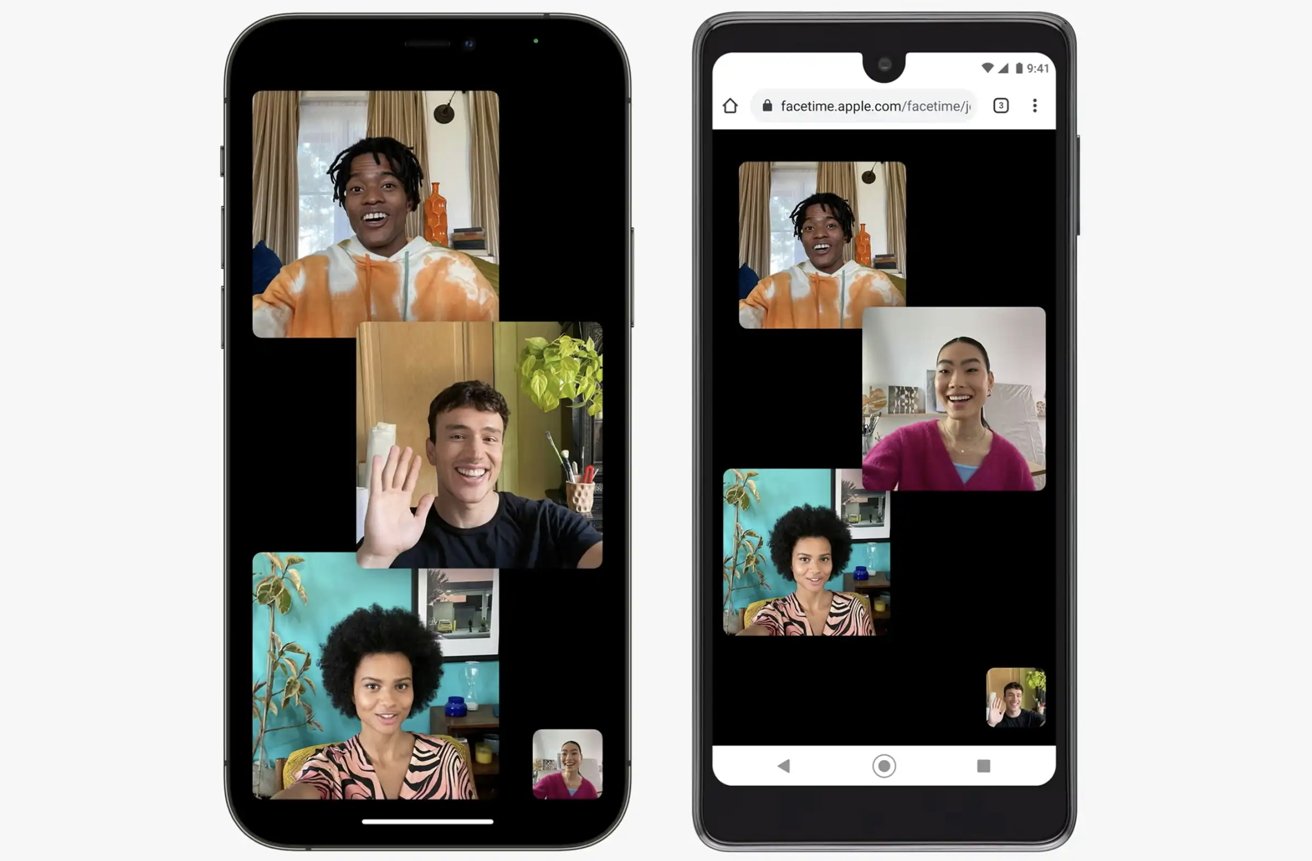
You can send a link either to start a call or while in a live FaceTime call. FaceTime links can be utilized by both Apple and non-Apple devices.
How to send a FaceTime link for a new call
- Go into the FaceTime app
- Select "Create Link"
- Select how you would like to send the link. You can send it via any messaging app, AirDrop it to another device, or copy the link and paste it into any program.
How to send a FaceTime while on a live call
When the recipient receives and taps on the FaceTime link, they will be redirected to a webpage where they will be asked to input the name they want to be displayed while on the call. The host of the call will have to allow the caller in before they fully join. Hosts can also remove participants from the call.
Android and Windows users can turn their camera and/or microphone on or off and/or can switch between the front and rear camera of their device while on the call.
Apple participants can utilize features such as blurred background, Memoji/Animoji character implementation, and other regular FaceTime features that can be done between Apple devices.
All FaceTime calls, no matter on device or on the web, are end-to-end encrypted.
Alternative video chatting platforms
While FaceTime links integrate well within iOS, they cannot be set up by Android and/or Window users. Here are alternative video calling platforms that work as well as cross-platform.
Zoom
Zoom became increasingly popular during the COVID-19 pandemic. It was the essential way for academic classes, groups, friends, and family members to be able to connect with one another in large gatherings remotely.
Though restrictions have been lifted and more people are gathering in person, Zoom is still a powerful way for people to interact with one another remotely.

Like FaceTime links, users can send a weblink to one another that can go live with a predetermined start time. Participants can join calls by link or a meeting identification code. Meetings can be set to either have a password and waiting room or not.
Zoom offers participants the to customize their video-chatting experiences with customizable names, virtual backgrounds, and emoji reactions. Users can also share their screens no matter if they are on a desktop, phone, or tablet.
The video platform also works with Center Stage - a feature that allows newer iPads to follow their subject and pan in and out when new subjects come in or leave the picture.
Zoom calls can be joined either visually or as a call-in with no visual of the recipient.
Zoom is now a well-known platform for people to connect and talk remotely. It does not cause a headache to understand how each feature works, and the most important features are displayed right in front and labeled as well.

Though Zoom is a very helpful application to use to connect with others virtually, it does have its downsides as well.
While Zoom is free to use, the company does offer paid plans for enhanced features. The most notable one is time-limited sessions.
When using Zoom for free, meetings can only have up to 100 people - which is more than enough for most - and can only go on for 40 minutes. Once 40 minutes is up, the call with automatically end, and everyone will have to rejoin.
This time limit may seem frustrating to people using the application - especially if having long conversations with an extended group of people - with everyone having to sign back once being kicked out.
The video chatting service also makes people download their applications when getting on calls. There is no web version to utilize as other video conferencing apps use.
This can be frustrating who had an important call to get on but forget to download the Zoom application, or for people who are not tech-savvy and may have a hard time downloading it.
You can utilize Zoom by downloading their app on desktops, tablets, and mobile devices.
Zoom Pro is $149.90 a year and comes with five gigabytes of cloud storage for any calls that may be recorded.
Google Meet — also known as Google Hangouts or Hangouts Meet
Previously released in March of 2017 under the name "Hangouts Meet", Google Meet centers strictly around video calling and leaves instant messaging to their other app: Google Chat. It appears that Google split Google Hangouts into two and made them their apps.
Participants can either start a new meeting or join with a code. Starting a new meeting with prompt up the options of either getting a meeting link to share, starting a meeting instantly or scheduling one directly to Google Calendars. People that use iCal can copy the meeting link and paste it into their new calendar event.

Google Meet allows participants to do the same functions they could with Zoom. The application allows them to change or blue their background and share their screens.
Areas that are different from Zoom would be the ability to add color styles to yourself and augmented filters onto yourself in real-time. Live closed captioning is also an option to be turned on for people who may be deaf or hard of hearing.
Calls can be active within the app or when exiting and in PiP (Picture-in-Picture) mode; similar to how FaceTime does it. Tapping on the call will directly bring you back to the app.
Center Stage is also able to be used during calls when using a supported iPad or device that has it.
If the history of Google's relationship with messaging apps repeats itself, then Google Meet's days are numbers.
Google Talk launched in 2005, and since then, Google has introduced over 15+ new interactions to their messaging apps. These have ranged from messaging on Youtube (2017) to messaging in Google Pay (2021). It seems that Google wanted to add a messaging function to every service they offered.
Only time will tell how long Google Meet has, and when the company will introduce - or perhaps reintroduce - a new messaging application for people to connect with.
Bottomline, it seems that the messaging applications Google offers are not stable to stay, and will sooner or later be replaced with another application with a different name but offers mostly the same features.
Google Meet can be accessed and used via desktop, tablet, and/or phone. You will need to have and be signed into a Google account to create a meeting but do not need one to join.
Google Meet can be downloaded for free and has no current subscription plan for additional features.
Microsoft Teams
Though heavily seen as a platform for business matters and not casual conversations, Microsoft Teams allows nearly the same level of interactive features as Zoom does. The platform acts as both a video chatting and instant messaging platform simultaneously.
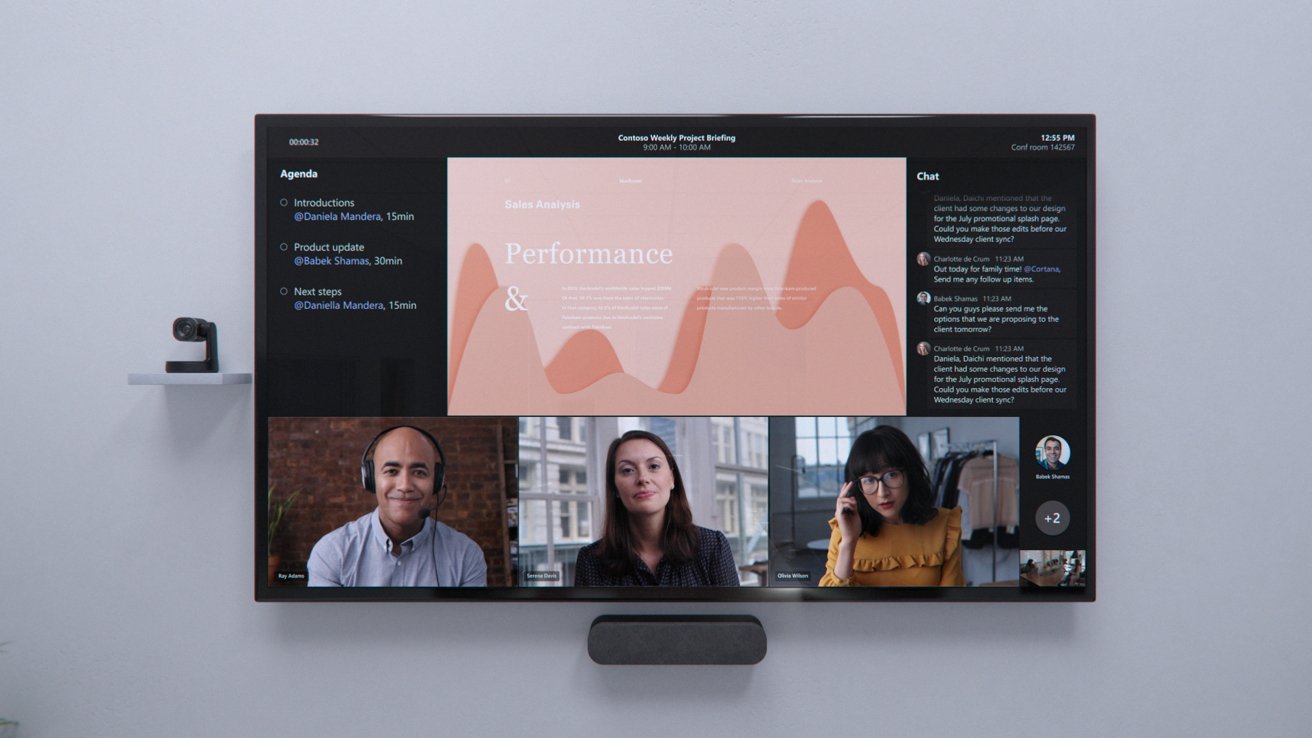
On Microsoft Teams, you can start an instant meeting, schedule one for later, or get a meeting link for everyone - including you - to join at a later time. While in a call, you can share your screen, use emoji reactions, turn on live captions for people who are deaf and/or hard of hearing, set virtual a background, and be put on hold if you have to leave the meeting momentarily.
You can enable or disable chat bubbles overlaying the screen for people talking in the chat. Enabling them will show every message being sent by anyone in the chat, and disabling it will not.
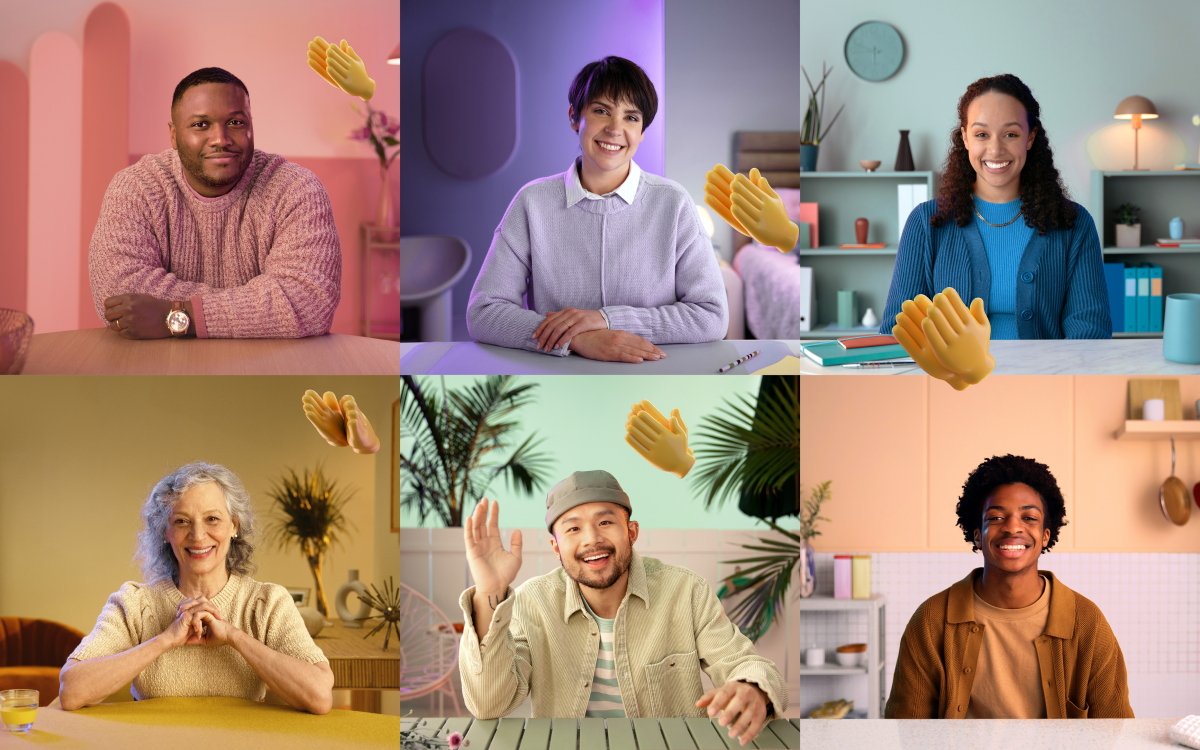
Microsoft allows for end-to-end encryption (E2EE) between two recipients for audio, video, and screen-sharing. A little shield with a lock icon will be showcased in the upper left of the screen to indicate that E2EE is active.
Center Stage is also able to be used during calls when using a supported iPad or device that has it.
There is also an instant messaging section that allows people to add friends and message them either by their name, phone number, or email. Messages do not vanish and can be reacted to via emojis.
Microsoft Teams is free to use on desktops, tablets, and/or phones. You do need to create a Microsoft account to utilize the features of creating a call, but do not need one to join one.
Third-party messaging applications
While iMessage is the native messaging app on iOS, iPadOS, and macOS, it does not support RCS (Rich Communication Services) - the new standard in messaging that replaces SMS. RCS would get rid of the blue and green bubble differences that are displayed depending on what device you are communicating to
Furthermore, texting in a group chat with at least one Android becomes frustrating in iMessage when certain features are not available. Message effects and reactions do not work properly, you cannot freely leave a group chat, no customization for the group chat name or icon, no in-thread replies, and - ultimately - there is no guarantee that everyone will get the message you send.
To combat the frustration, most people switch to a third-party app to message others but do not do it from the native messaging app on their phone. Here are the top messaging apps to consider using.
WhatsApp - which is owned by Facebook - has been mentioned by Apple during their keynotes multiple times.
The messaging app can utilize your phone number for others to find you and you to connect with them as well. You can set a profile picture, name, and bio you want to be displayed for others to see.
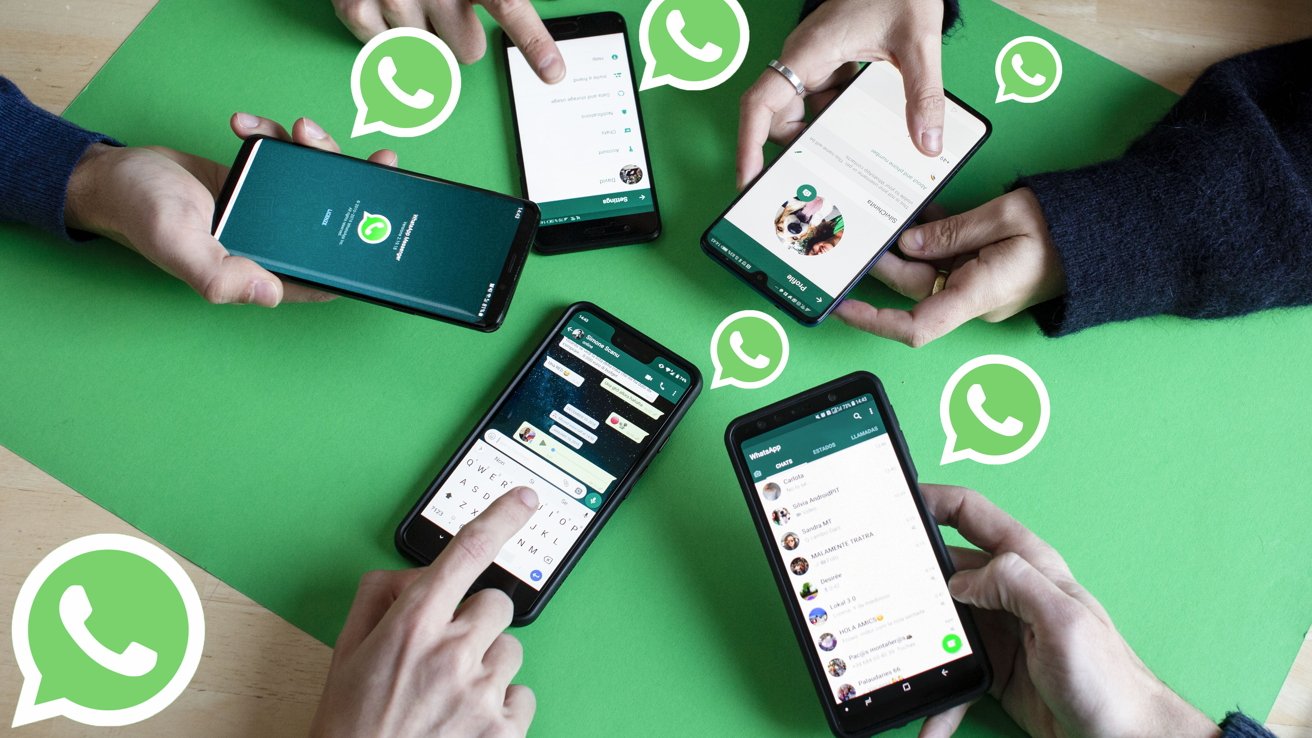
This application is good for those who may be international, traveling internationally, or somewhere where there is no cellular service.
Messaging can be configured between you and one other person, or you can create a group chat and set the name and icon of it as well.
Within the messages, you can react to any specific text sent with any emoji, reply directly to it, forward it to another chat, or star it for later (which can be seen after tapping the user's name within the chat).
You can call and video chat within the app. Exporting and/or clearing the chat at any time can also be done.
Customization is also available by allowing people to change the background and text-tone set when receiving and viewing messages.
You can add stories to your profiles for people you are friends with to see. Posts will vanish after 24 hours.
End-to-end encryption is also set within each chat. Messages, photos, videos, voice messages, data, and calls will also be safe under it.
WhatsApp is free to use and every participant must have an account to use it.
WhatsApp can be downloaded on macOS and iOS, but not iPadOS. You must use a safari extension to access WhatsApp messages on your iPad.
Facebook Messenger
As an extension of Facebook, Messenger allows people who use the social media app to send one another messages, Facebook posts, voice memos, photos, and videos and call or video chat directly in a chat.
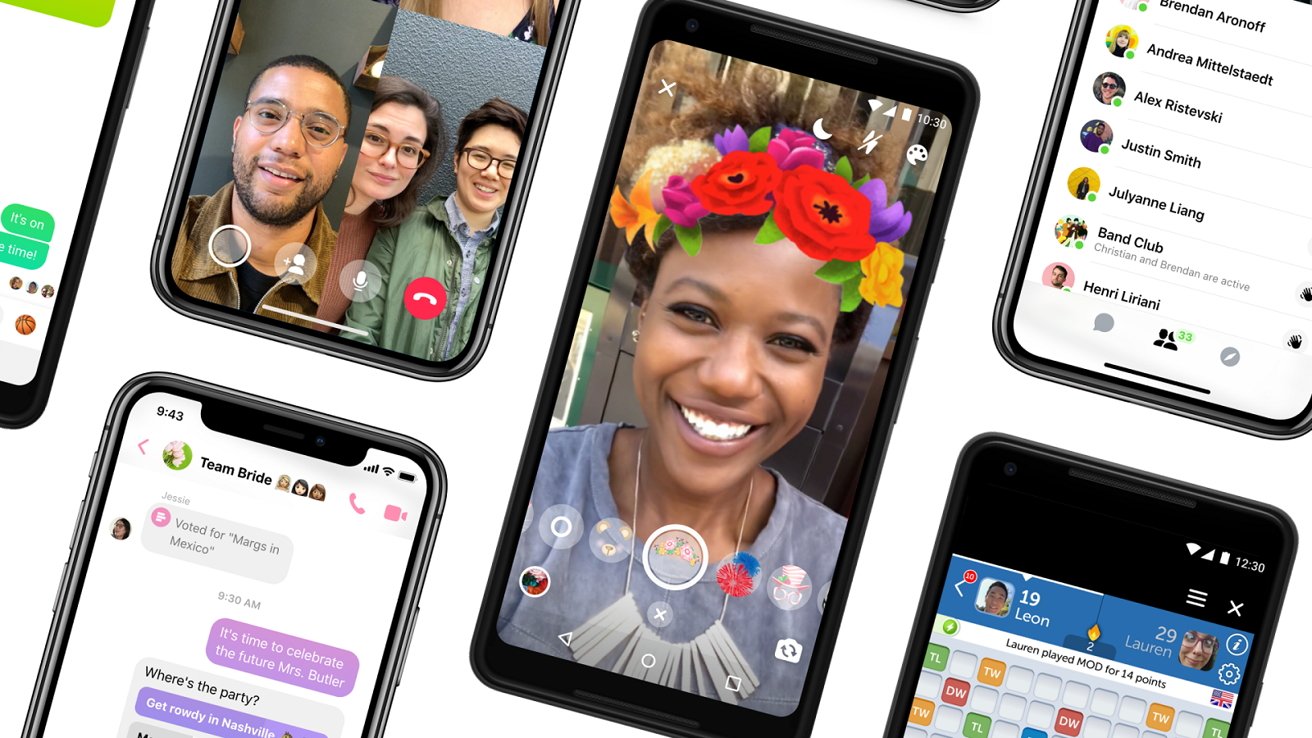
When starting a new conversation, you can either choose to message people individually or create a group. You can change the name and icon of the group, give the chat a thematic background, give users in the group nicknames, and/or send oversized emojis and reactions supplied by Facebook.
You can also send money between people through Messenger by connecting a debit card or your PayPal account to the app. Using a debit card has no fees, while using PayPal may have fees applied.

To make sure your messages are being end-to-end encrypted, when starting a new chat, tap the switch on the upper right that has a lock icon on it. Doing this will make all new chats encrypted. Messages with business accounts and public figures can not be encrypted.
Facebook is looking to make end-to-end encryption automatically turned on when starting new conversations instead of having to turn it on manually.
To enable encryption on current chats, you can tap on the user's profile picture and then scroll down and tap "go to secret conversation". This will start a new chat with the person with no prior messages following.
Enabling Vanish Mode will bring Snapchat-like features to your conversation. Received messages will vanish after being seen, a notification will be sent if someone took a screenshot of the chat, and the conversation can be reported. Modes can be switched between by swiping up from the bottom of the screen.
Though Facebook Messenger may be a good solution to most, many may steer away from it due to not agreeing with Facebook's moral platform regarding personal data and how they have managed it in the past.
One of the biggest scandals to happen to Facebook, in the sense of how they handled personal data, was when it was discovered that they sold millions of profile data to Cambridge Analytica without the person whose data it was consent. This resulted in many investigations within both companies and Mark Zuckerberg - the co-founder of Facebook - testifying before Congress in 2018.
The lack of privacy upholding has led many people to not use either the instant messenger or social media network that Facebook offers.
Facebook Messenger is free to use and can be accessed on a desktop, tablet, and/or phone. You must create and have a Facebook account to use it.
Discord
Discord is a great way to interact with others that have similar interests as you. To indulge in these chats, you can create servers and/or join ones.
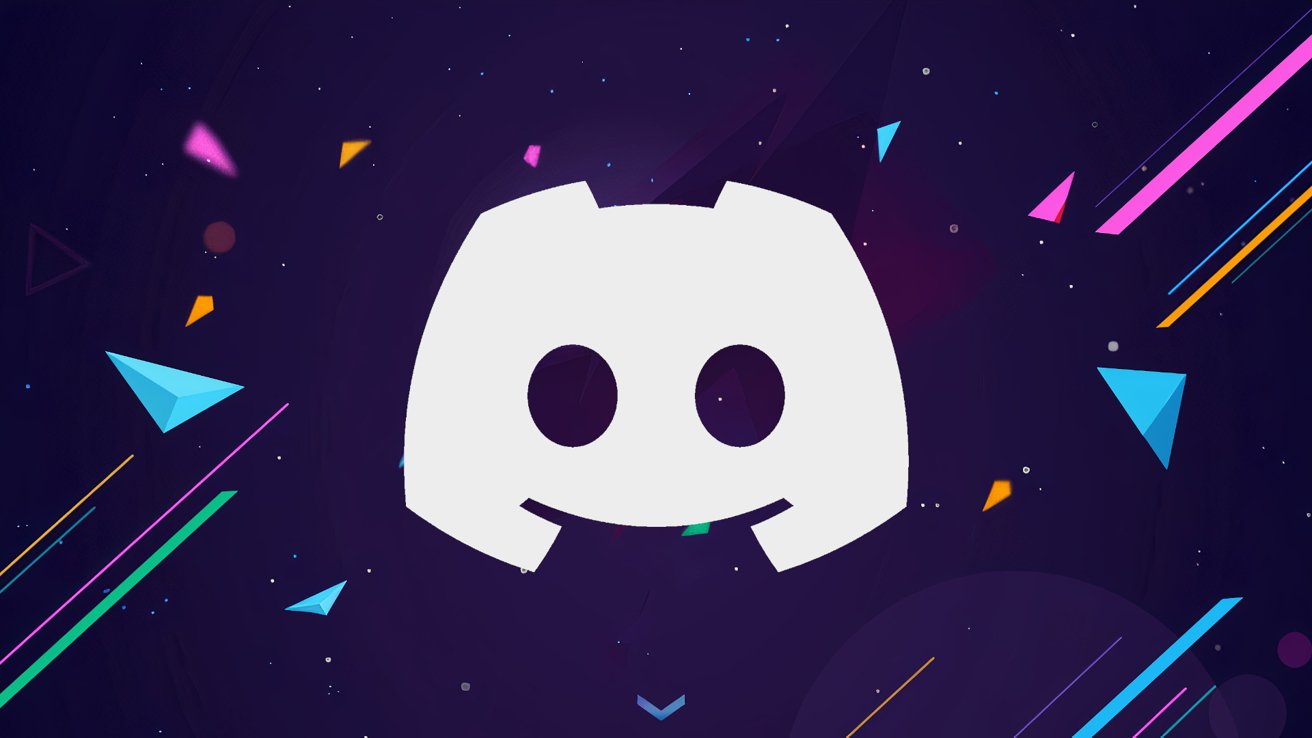
As admin of a server, you can decide if you want it to be public or private, display banner artwork, and/or warn about or ban hostile people on servers.
You can find friends on the app by typing in their username, syncing your contacts, or using Bluetooth or wifi to scan for friends nearby. Once finding them, you can send a friend request and await their response to it.
Once you add more friends to your network, you can chat with them in group chats or one-on-individually.
When chatting, you can send and share images, GIFs, videos, and files with others on the server. The app offers a "Slack-like" interface for conversations.
While in a sever, you can give individuals permissions to performance certain duties. These duties could entail putting restrictions to messages or even partaking in administrative actions. These can be assigned both on the server level and channel level.
You can change your status on the app from being active to Do Not Disturb. You can also create custom statuses to fit your distinct preference. You can set the name, the emoji that goes along with it, and how long it is on for.
Discord automatically encrypts your conversations with others, and also protects your IP address as well.
While the app may not be ideal for most, for people wanting to share common interests within a community (if it is gaming, scholarly, technologically-based, and/or community-focused), it is a great platform to communicate on. It allows for easy setup and communication features that enable the chat to be filled with engaging discussions.
Though free to use, Discord does offer subscription services as well. You can subscribe to Discord Nitro Class for $5 a month, or Discord Nitro for $10 a month. Slightly discounted annual plans are available as well.
Discord can be accessed from your desktop, tablet, and/or phone. It is an Electron app, with all that entails.
Slack
Slack is another great option to choose from when deciding on an application to message others from. It allows users to talk directly to certain people or everyone on the channel - the central hub - in a big group chat.
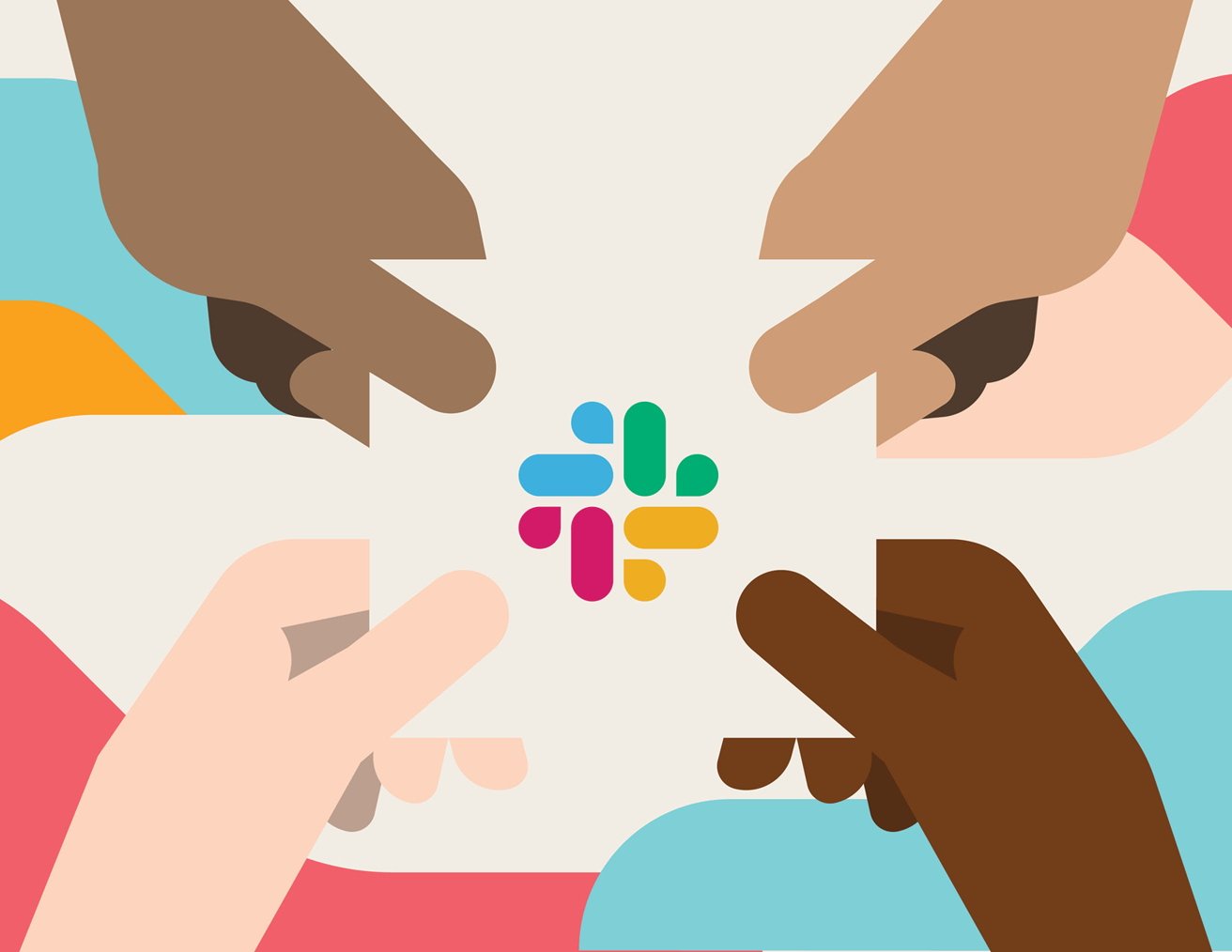
No matter when you join a certain channel, you will be able to see past conversations had between people in the overall thread when scrolling back. This is good for catching up on any important information you may have missed before joining.
The app also allows you to star/pin your favorite and most important people to the top of the list. This gives you easy access to the people who you may message most or are most important to get in contact with.
People you have added have little circles next to their profiles when looking at the list of different conversations you have. These circles - and their colors - define if they are online or not.
Green filled-in circles mean they are online, while blank white circles mean they are not. Circles with a "z" next to them indicate that they paused their notifications at the current time. You can still send messages when whichever mode they are on, but they may not receive or respond to them right away if they are offline or notifications are paused.
The customization that the app offers is also a highlight as well. You can customize your profile with a picture, your full name, and the name you want to be displayed for others to see. You can also change your status at the moment from pre-listed options to ones you can create (and you can decide if you want to receive notifications during it or not).
Notifications are customizable too by being able to turn them on or off, disabling them from certain chats, and only be notified if mentioned in a thread. Mentioning someone can be done by writing out their name and putting an "@" symbol before it to notify them. Writing "@here" in the channel's thread will notify everyone who is part of the channel.
Slack is a great application to use when wanting to talk to a huge group and then individual people within the group one-on-one. The options the application brings are handy when wanting to get a hold of everyone or pause notifications when stepping away.
The application is free to use. To get further features like group calls with up to 15 people, timely info and actions, and full context of your team's message history, there are monthly per-user fees.
Slack can be downloaded on desktops, tablets, and/or phones. It is also an Electron app.
Social media apps - Instagram and Snapchat
Now, it seems that nearly every social media app has a messaging component connected to it. The messaging app is either the center of the app, backed into the app features, or a separate app altogether.
Two social media apps that have well-structured social features included in them would be Instagram and Snapchat.
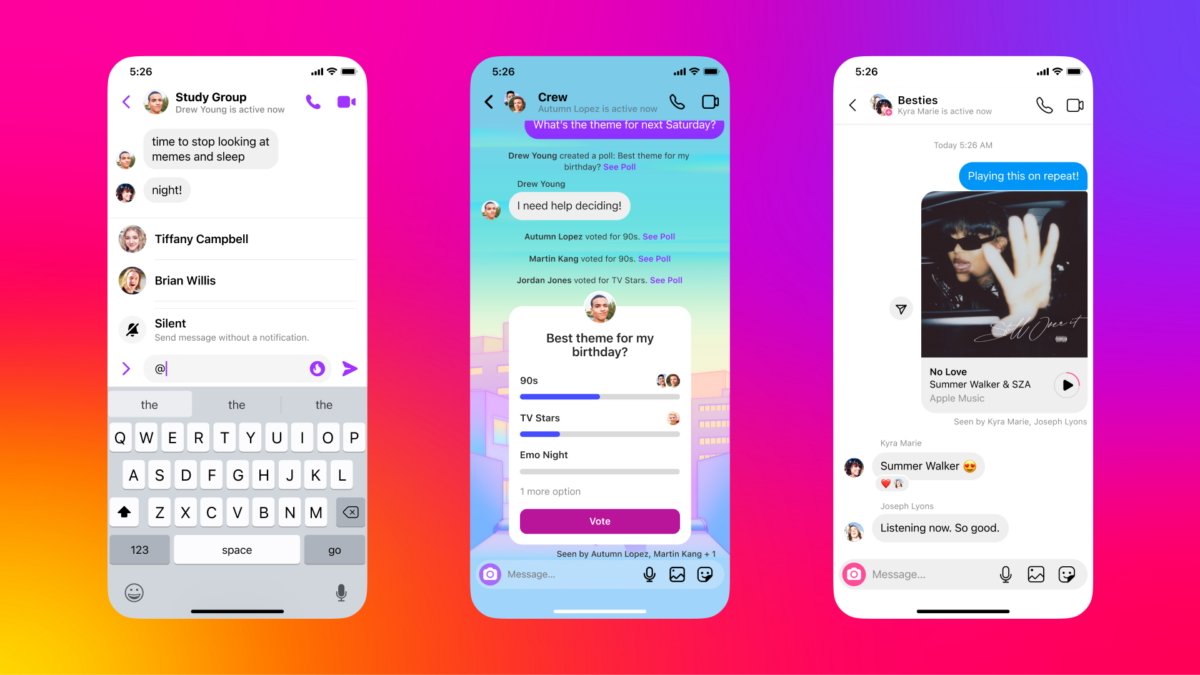
Instagram - owned by Facebook - allows people using the social media platform to send a direct message to one another within the app.
People can send posts, text messages, video chat and call one another, create group chats with unique names, and give each chat a thematic background to go with it. Messages can be reacted to with any emoji the responder wants to use.
Vanish mode can be turned on within the settings of any chat and will set the messages to disappear once the chat is closed. This feature work similarly to the one on Facebook Messenger. You can also send photos and videos to others that vanish once opened and watched.
Other accounts not following you will show up within "requests". You can decide whether to accept their message, delete it, or block the account entirely.
Instagram is primarily used on cellular devices where it is optimized best.

Snapchat allows users to send a message that can disappear once looking at them or be set to disappear after 24 hours. Group chats can be formed and anyone can leave at any time. You can change the group chat name and directly reply to individual messages within the message thread.
The app will notify you when someone is typing and when they have sent you a chat. If the person is still in the chat while you view the message or start responding, their bitmoji will be showcased peaking over the text box.
Textual messages will be showcased with a blue message bubble, and vanishing photos sent to you or the group will be indicated by a red box.
You can also video chat with people on the platform as well. When calling, you and the recipient can put filters on that are usually offered when taking pictures for your Snapchat story.
Both platforms can be downloaded for free on your tablet and/or phone - but are made more to be downloaded on cellular devices.
The battle continues
While the fight between Android and iOS users will continue to go over the color of text message text bubbles, it is healing to know that other options offer the same - or even more in some cases - features as do the stock-messaging apps that are supplied by the tech giants.
Consumers want choice, and being able to be given that - for free - is the right move by third-party developers. Being able to release new features to their messaging applications without having to wait for a major update that happens periodically is great for the user experience.
If Apple and Android do not come to terms with their differences and implement a better communication bridge between the two, then it is nice to know third-party Communication apps will fill that gap.